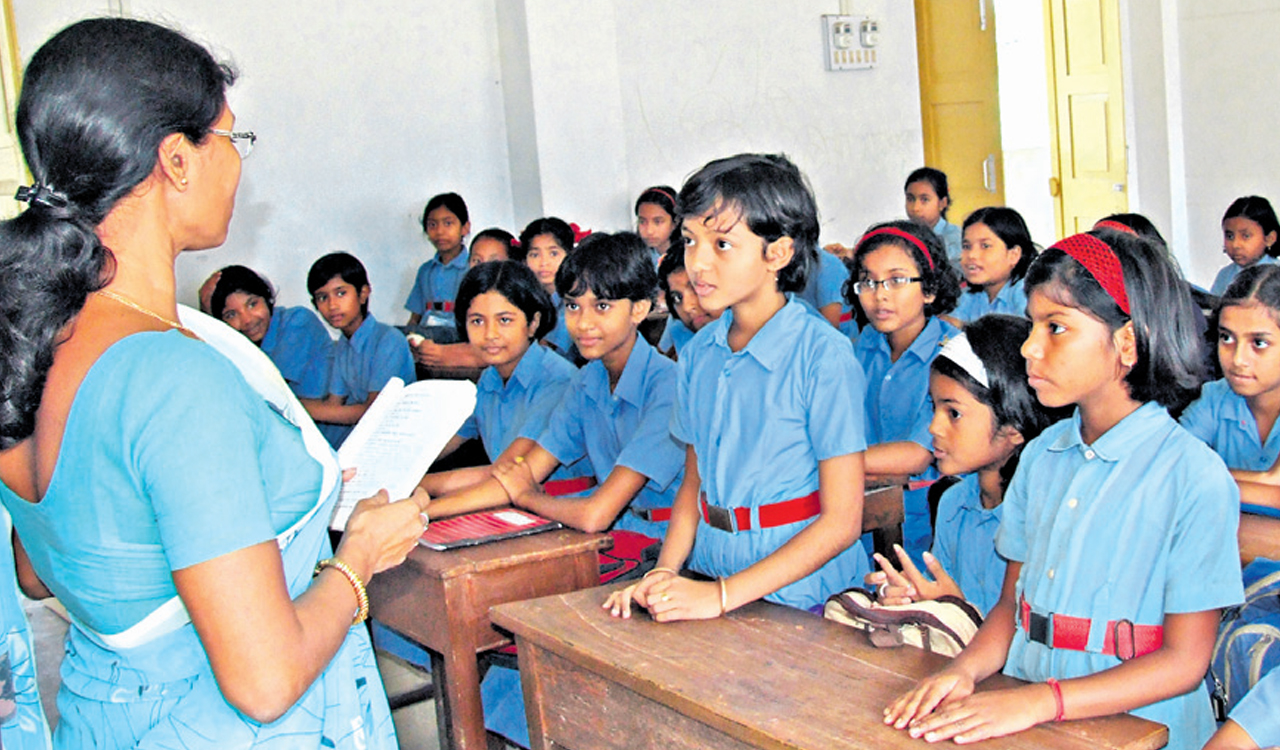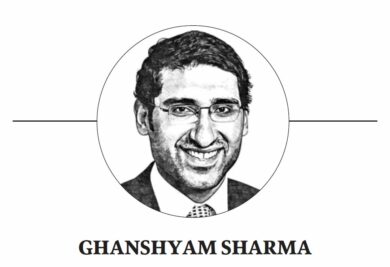Opinion: Higher electricity tariff for schools isn’t cool
Imposing commercial power tariffs on schools warrants critical examination as they are not-for-profit organisations

By Ghanshyam Sharma
The Annual Status of Education Report, released by Prathamm, an NGO, has documented stagnating learning outcomes among students in India for several years. Poor learning environments can translate into lousy learning outcomes. Over the past several months, intense heat and humidity have raised concerns about the learning environment for students in classrooms.
A metric of the learning environment in a school could be electricity use per child. Schools can use electricity for space cooling (or heating in winter), water cooling or heating, ventilation, maintaining computer labs and lighting, among other uses. Hence, a higher electricity use could indicate a more comfortable classroom environment. For example, a study by Warkocki, Salazar and Espinoza (2019) found that reducing classroom temperature from 30 degrees to 20 degrees improves productivity by 20 per cent.
According to data from the US Energy Information Administration (EIA), schools in the United States spend about $149 per student per year on energy use. According to a survey of budget private schools we conducted, schools in India spend $3-5 per child per year on electricity use. Even after accounting for marginal differences in energy prices, energy use per student in India is absurdly lower. Given the long summers and increasing heat waves experienced by the Indian sub-continent, poor cooling conditions put schoolchildren at significant health risk.
Sought-after
India has achieved almost universal school enrollment at the primary level. Nearly 270 million children attend schools nationwide, including government, private, government-aided, minority and unrecognised schools.
With rising disposable incomes and aspirations, more parents are sending their children to private schools. Official estimates suggest that over 50 per cent of students in India are enrolled in private schools and the enrollment has steadily increased every year. More than 90 per cent of private schools are affordable, low-budget private schools that charge less than Rs 600 per month. Hence, many private schools cater to economically poor parents who send their children to such schools in anticipation of improved learning outcomes.
The Supreme Court, with its judgement on Unnikrishnan v State of Andhra Pradesh, 1993, established education as a symbol of charity and disallowed educational institutions from making profits
Unfortunately, private schools are charged for electricity at industrial or commercial rates despite catering to primarily poor students. Commercial electricity user charges are substantially higher than residential electricity charges. Depending on the State and the amount of electricity used, commercial rates faced by low-budget private schools could be twice or thrice as high as the residential electricity rates. Since electricity tariffs increase with electricity usage, schools with higher enrollments are likely to face higher electricity tariffs. Steep electricity tariffs will directly affect the electricity use by budget private schools.
Financial Burden
Budget schools are likely to respond to higher electricity prices by reducing electricity use in schools. This is for two reasons. First, most private schools cannot increase the fees because they cater to low-income families with limited resources. Second, fee regulation laws bound private schools by restricting their ability to raise fees to allow for higher electricity charges. Hence, schools are less likely to incur additional spending on cooling during extreme summers because they will not be able to recover the costs from parents.
However, sub-optimal use of electricity in school is concerning when juxtaposed with rising temperatures. According to the World Meteorological Organization, 2023 was the warmest year recorded, and the past decade (2014-23) was the warmest ever. India too experienced unprecedented heat waves this summer, with temperatures in several regions crossing 50 degrees Celsius. Several experts have predicted that the length of the summer will go up in the forthcoming decades. The India Meteorological Department has forecast that the length of the heat wave periods in the country will increase from around three days to 18 days by 2060.
Optimal use of electricity in schools is critical to creating an environment conducive to learning. Water coolers, air coolers, fans and even air-conditioners have become necessities in harsh heat conditions. However, the government discourages schools from providing these facilities to their students by imposing steep tariffs on them. This is likely to result in a poor learning environment for students.
Impacting Outcomes
Ironically, the government imposes steep commercial electricity tariffs on educational institutions despite the fact that schools are not-for-profit organisations. The Supreme Court, with its judgement on Unnikrishnan v State of Andhra Pradesh, 1993, established education as a symbol of charity and disallowed educational institutions from making profits. The government is, therefore, imposing commercial tariffs on non-commercial activity. Further, schoolchildren are the recipients of schooling activities. When schools reduce electricity use in response to the high electricity tariffs imposed by the government, children suffer from suffocating heat in cramped classrooms.
While most State governments impose commercial tariffs on school electricity use, the policy varies between States. For example, Chandigarh does not impose commercial electricity tariffs on schools. Other States must recognise the risks of imposing steep electricity tariffs on schools and switch to regular electricity rates. Such policies discourage schools from implementing more effective cooling and ventilation systems, hampering students’ learning outcomes and increasing their health risks.
State governments imposing commercial electricity tariffs on schools is a policy that warrants critical examination. Schools, mainly those catering to low-income families, operate on tight budgets and lack the financial flexibility to absorb increased utility costs without compromising educational quality. Commercial electricity tariffs, typically higher than residential rates, put an additional financial burden on these schools.
Moreover, such a policy seems counterproductive to providing equitable and quality education. It raises questions about the prioritisation of educational infrastructure and the state’s commitment to supporting schools, particularly those in economically disadvantaged areas. Re-evaluating this tariff classification is essential to align energy policies with educational objectives and improve learning outcomes.

(The author, a PhD in Economics from Clemson University, is Research Lead at Centre for Civil Society, New Delhi)
- Tags
- Andhra Pradesh
- NGO
- Prathamm
- Salazar
Related News
-
Teen allegedly kills man after being denied Rs 10 for liquor in Andhra
-
Naidu meets Sitharaman, seeks Centre’s support for key Andhra Pradesh projects
-
Hyderabad Cybercrime police arrest two in ‘Digital Arrest’ fraud targeting senior citizen
-
AP CM raises Almatti Dam height issue with Union Jal Shakti Minister
-
Top seeds Chotrani and Suraj ease into Western India Squash quarterfinals at CCI
6 hours ago -
Travis Head’s unbeaten 142 puts Australia in control of Ashes 3rd Test
6 hours ago -
Bangladesh: Funeral of youth leader Sharif Osman Hadi to be held in Dhaka under tight security
6 hours ago -
India to face Pakistan in U19 Asia Cup final after semi-final win
6 hours ago -
India wrap up year with commanding T20I victory against South Africa
6 hours ago -
Roongta Cinemas opens first South India multiplex in Hyderabad
6 hours ago -
Dhakshineswar Suresh stuns Medvedev to take Kites into WTL final
6 hours ago -
Satwik-Chirag create history by reaching semifinals of BWF World Tour Finals
6 hours ago




